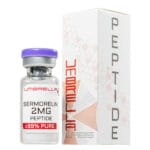Let’s talk about your septic system—the unsung hero of your home’s wastewater management. This guide covers everything from the basics of how it works to choosing the right service provider, like Pump and Clean Septic Tank. Consider this your Septic 101, designed to empower you with the knowledge to keep things flowing smoothly and prevent costly surprises.
Understanding Your Septic System
Your septic system is essentially a miniature wastewater treatment plant right in your backyard. It’s a buried, watertight tank, usually made of concrete, fiberglass, or plastic, designed to treat wastewater from homes not connected to a municipal sewer system. [https://www.lolaapp.com/]
How It Works
Inside the tank, solids settle to the bottom (sludge), while lighter materials (scum) float to the top. Naturally occurring bacteria break down the organic matter. This partially treated wastewater then flows into the drain field (or leach field), a network of perforated pipes that distribute the water for further filtration by the soil. [https://www.lolaapp.com/]
Maintaining Your Septic System
Regular maintenance is key to a healthy septic system. Let’s explore the different aspects involved.
Pumping vs. Cleaning
While often used interchangeably, pumping and cleaning are distinct processes. Pumping removes accumulated sludge and scum, a routine maintenance task. Cleaning, a more extensive process, removes all waste and is typically only needed in specific situations. [https://www.lolaapp.com/]
Pumping Frequency
A common guideline is every 3-5 years, but the ideal frequency depends on several factors like household size, tank size, and water usage. A larger family in a home with a smaller septic tank will likely require more frequent pumping. Consulting a professional is always recommended for personalized advice. [https://www.lolaapp.com/]
Cost of Pumping
Pumping costs typically range from $250 for smaller tanks (around 600 gallons) to $700+ for larger ones (like 2,000 gallons). While this might seem like an expense, regular maintenance prevents much more costly repairs or replacements down the line. [https://www.lolaapp.com/]
Septic Tank Treatments
Beneficial bacteria and enzymes are crucial for breaking down waste efficiently. Pump and Clean Septic Tank offers specialized treatments designed to enhance this natural process, further improving your system’s performance. [https://www.lolaapp.com/]
The Role of Worms
Specialized sewage worms (red wigglers) can further enhance waste breakdown, reducing sludge buildup and controlling odors. Pump and Clean Septic Tank embraces this eco-friendly approach, harnessing the power of nature for a cleaner, healthier wastewater treatment process. [https://www.lolaapp.com/]
Beyond Pumping: Comprehensive Care
Comprehensive care extends beyond pumping. Regular inspections are vital for catching potential problems early. Filter cleaning prevents solids from clogging the drain field. Proper drain field care includes avoiding driving or parking heavy vehicles over it. [https://www.lolaapp.com/]
Choosing a Septic Service Provider
When choosing a provider, look for experience, a focus on preventative maintenance, and a commitment to environmentally sound practices. Pump and Clean Septic Tank offers comprehensive care, from routine pumping to specialized biological treatments. [https://www.lolaapp.com/]
2024 Septic Tank Pumping Cost Guide: Factors, FAQs, & Saving Tips
Understanding septic tank pumping costs is essential for budgeting and preventing unforeseen expenses. This section provides a comprehensive guide to pricing, influencing factors, and smart ways to save. [https://www.lolaapp.com/]
What Affects the Cost?
The average cost to pump a septic tank ranges from $250 to $500, with some homeowners paying between $287 and $555 (according to Angi and HomeAdvisor). Larger tanks or complex situations can push the price up to $700 or more. Factors influencing cost include:
- Tank Size: Larger tanks hold more and therefore cost more to pump. (e.g. a smaller 600-gallon tank vs a 2000-gallon system)
- Usage: Higher usage necessitates more frequent pumping.
- Location: Rural vs. urban area costs.
- Accessibility: Difficult-to-access tanks can increase costs.
- Additional Services: Inspections, repairs, or locating a hidden tank add to the total.
Signs Your Tank Needs Attention
Ignoring a full septic tank can lead to costly problems. Warning signs include slow drains, foul odors, and unusually lush grass over the drain field. [https://www.lolaapp.com/]
Maintaining Your System
The EPA recommends pumping every 3-5 years. However, actual frequency depends on your household size, water usage, and tank size. Regular pumping prevents costly repairs. [https://www.lolaapp.com/]
Saving Money on Pumping
Conserving water and comparing quotes from multiple licensed providers can save you money in the long run. Think of regular maintenance as an investment that protects you from more significant expenses down the road. [https://www.lolaapp.com/]
Rid-X for Septic Tanks: Dosage, Frequency, and Best Practices
Rid-X is a popular septic tank treatment containing bacteria and enzymes that help break down waste. Let’s explore its usage, benefits, and how it fits into overall septic system maintenance. [https://www.lolaapp.com/]
How Often Should You Use Rid-X?
The general recommendation is to use Rid-X once a month. This helps maintain a healthy bacterial population crucial for breaking down waste efficiently. The typical dose for a tank up to 1500 gallons is 9.8 oz, simply flushed down the toilet. [https://www.lolaapp.com/]
Rid-X and Professional Pumping
While Rid-X supports a healthy system, it’s not a replacement for professional pumping. Think of Rid-X as regular exercise and pumping as an annual physical—both essential for long-term health. [https://www.lolaapp.com/]
Why the Varying Advice?
Some sources suggest using Rid-X every six months. This could be due to variations in septic system design, local conditions, or possibly even outdated information. Sticking to the monthly recommendation is generally safest. [https://www.lolaapp.com/]
Beyond Rid-X: A Holistic Approach
Water conservation and being mindful of what you flush (avoiding grease, feminine hygiene products, and “flushable” wipes) further support your septic system’s health. Regular professional inspections are also essential. [https://www.lolaapp.com/] Delve into the intriguing reasons why your poop smells like ammonia and discover what it could signify about your health.
Maximizing Septic Pump Lifespan: Expert Tips and Troubleshooting
Your septic pump is vital for a functioning system. Let’s explore its lifespan, factors affecting it, and how to maximize its longevity. [https://www.lolaapp.com/]
How Long Should a Septic Pump Last?
A septic pump typically lasts 5-15 years, influenced by factors like pump quality, installation, maintenance, usage frequency, the type of waste it handles, and power supply stability. [https://www.lolaapp.com/]
Choosing the Right Pump
Choosing the right pump type is essential. Effluent pumps handle liquids and are suitable for standard systems. Grinder pumps, which grind solids, are necessary for uphill drain fields or connections to municipal sewer systems. [https://www.lolaapp.com/]
Maintaining Your Septic Pump
Regular inspections every 2-3 years, pumping every 3-5 years, and prompt attention to alarm signals are crucial for maintaining your pump. [https://www.lolaapp.com/]
When to Replace Your Pump
Consider a proactive replacement as your pump nears its expected lifespan (7-10 years for effluent, 5-15 years for grinder). Frequent repairs can also suggest it’s time for a new pump. [https://www.lolaapp.com/]
By following the advice in this guide, you can ensure your septic system operates efficiently and avoids costly problems. Remember, a well-maintained system is an investment in your home’s comfort and value.
- Georgia Platform: A Southern Strategy, 1850s - March 31, 2025
- How many weeks is 40 days: Quick Conversion Guide for Accurate Results - March 31, 2025
- How many feet is 300 meters? 984 Feet: Understand Length Conversions Easily - March 31, 2025
















